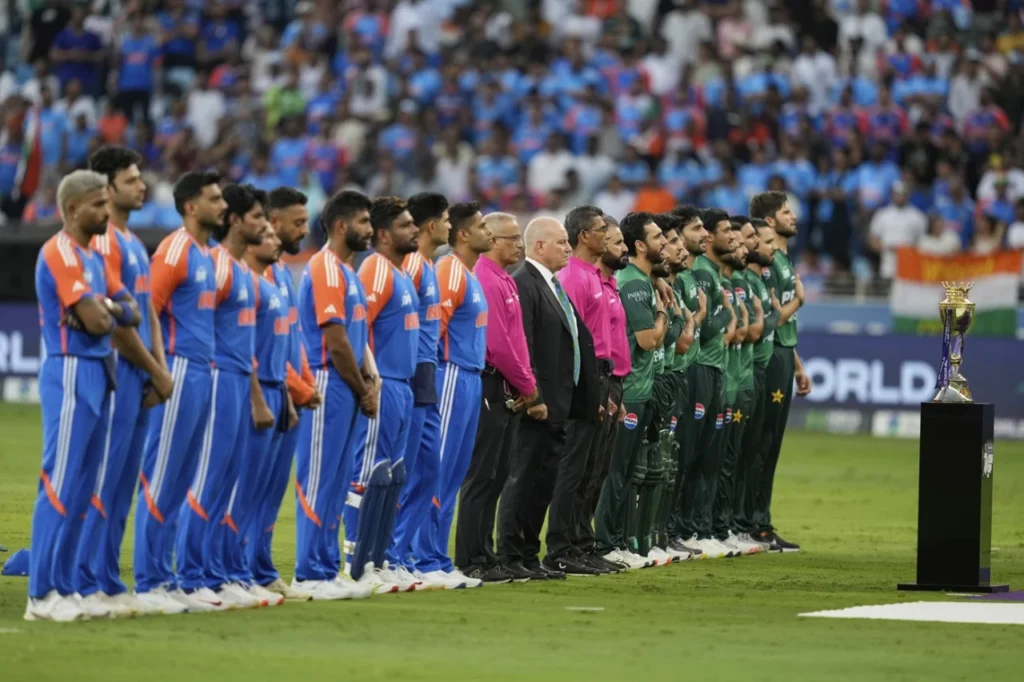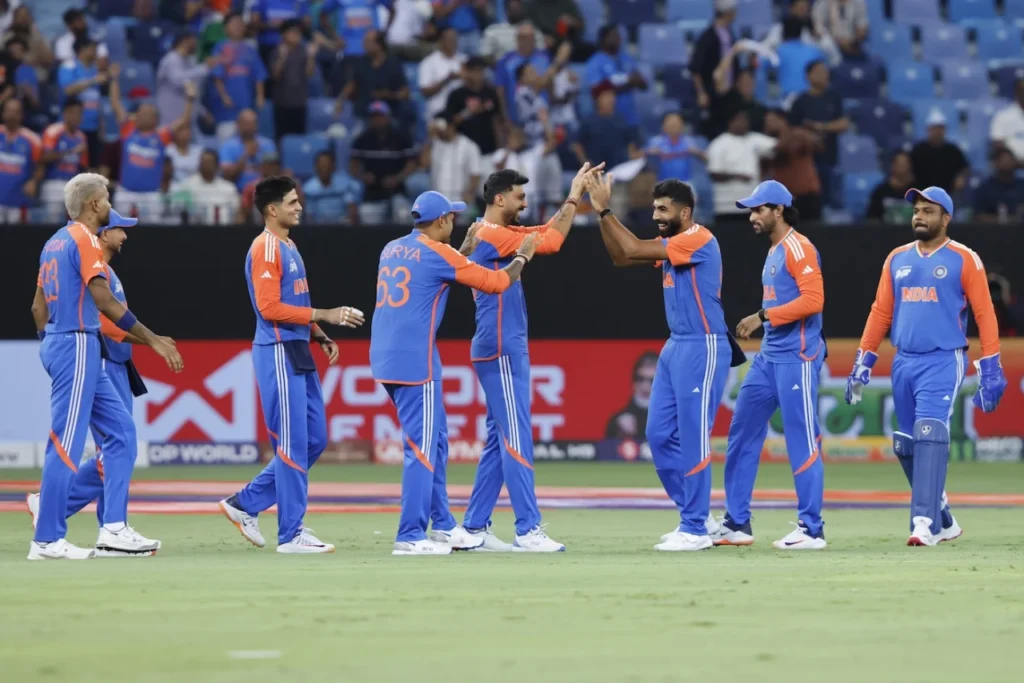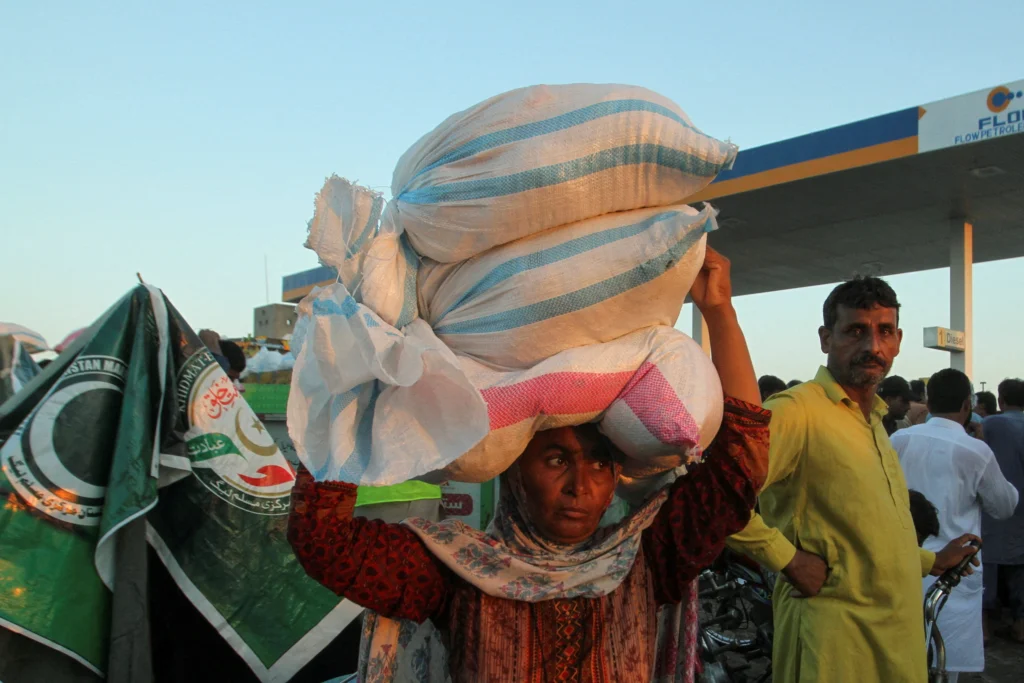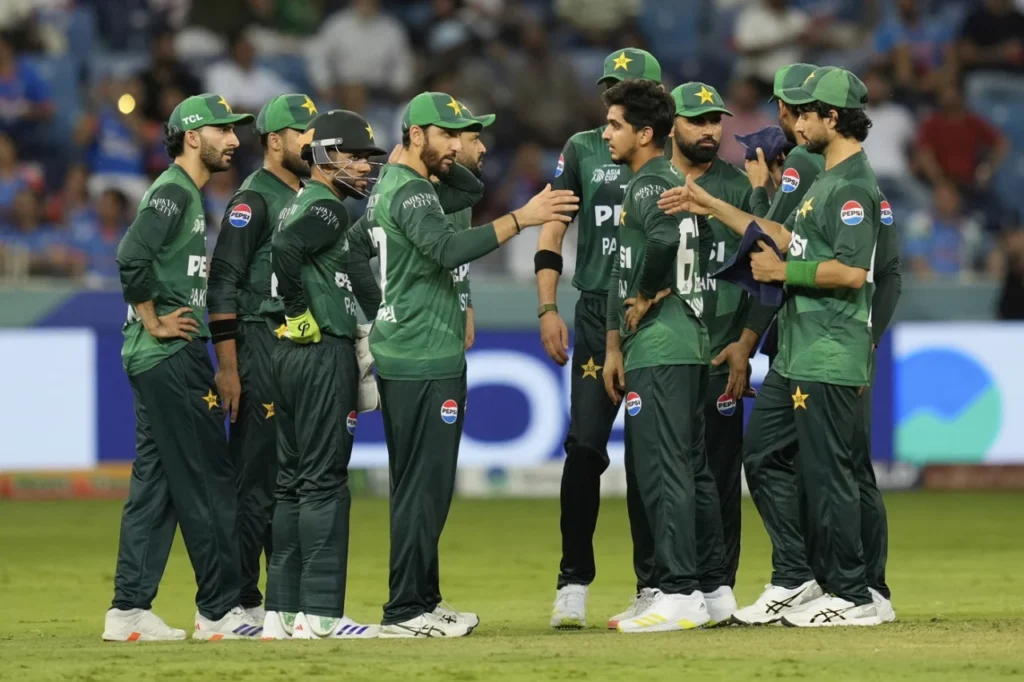- Web Desk
- 11 Hours ago
Pakistan vs India: what the scoreboard missed — climate crisis and stakes beyond cricket
-

- Web Desk
- Sep 15, 2025

By Urooj Mansab Khan
Months after missiles and weeks after monsoons, India and Pakistan met again. Not at the negotiating table, but on a cricket pitch.
In any other year, this might have sounded like business as usual. But the past five months have rewritten the region’s emotional and political terrain. Missile strikes and a near collapse of diplomatic channels were followed swiftly by the worst floods in decades, from Himachal Pradesh to South Punjab. India and Pakistan took the field in the shadow of war, flood, and a climate reckoning that neither side can face alone. The air, charged with something heavier than sporting tension, reminded anyone watching that this was not just another Asia Cup match.

The match is over. Pakistan performed poorly and India won. But what played out, on the field and far beyond it, made clear this was never just about cricket. What might have offered a rare moment of shared pause between two disaster-struck nations became, instead, a performance of nationalistic triumph and symbolic blame. Indian players dedicated their win to the armed forces and the victims of the Pahalgam attack, an act that, in the current political climate, reads less like a moment of mourning and more like a pointed message. After all, the team did not feel for their military when they comfortably defeated UAE just a few days back to dedicate their win to suffering families.
By the time the final ball was bowled, the match had become something else entirely: a reminder that even the few rituals still shared across the border are now conscripted into the theatre of rivalry. And in a season of shared catastrophe, that may be the most chilling scoreboard of all.
After the guns fell silent
The events of May 2025 did not simply strain India-Pakistan relations: they broke through layers of tacit assumptions. On April 22, the Pahalgam attack in Indian-Occupied Kashmir became the flashpoint. Pakistan firmly denied any involvement, calling for a “neutral, transparent and credible investigation” into the incident. The government emphasised that Pakistan’s sovereignty, territorial integrity, and civil infrastructure were harmed by the strikes. Prime Minister Shehbaz Sharif said that India had returned to “a pattern of exploitation, leveling baseless allegations and false accusations without credible investigation or verifiable evidence.” Meanwhile, India suspended the Indus Waters Treaty. Sharif also warned that any attempt to interfere with Pakistan’s water rights under the treaty would be met with “full force and might.”

For ordinary people, especially in border regions, these were not abstract declarations. Economic life was disrupted; travel curtailed; family visits and cultural exchanges were halted. The war language in the media surged, and cricket, already rare in bilateral form, became collateral damage in the broader diplomatic freeze.
When nature reminds us
The Asia Cup match took place as both nations faced a far more dangerous adversary than each other: climate collapse. The monsoon of 2025 brought flooding at scales many had not seen in decades. According to Pakistan’s National Disaster Management Authority (NDMA), since June 26, more than 900 people have died, more than 1,180 have been injured, and over 2.4 million have been displaced in Punjab alone. Thousands of villages were submerged as rivers like the Chenab, Ravi, and Sutlej breached their banks, and are refusing to recede.
Across the border, Indian Punjab also saw its worst floods in three decades; hundreds of villages submerged, crops destroyed, homes lost. Food price inflation looms as farmland has been devastated.

This may be a good time to remind that the rules of geography do not respect political borders. Rising temperatures, melting glaciers, cloudbursts, swollen rivers: these phenomena have synchronised across the subcontinent. When the Sutlej swelled and burst its banks in August, the deluge drowned crops in Kasur just as it did in Ferozepur. Farmers on both sides watched their fields vanish. Relief operations stalled. Roads collapsed. Children went missing.

And in the middle of this, just months after a brief, sharp military conflict, India and Pakistan met on a cricket field. The rivalry was loud, the viewership immense. But beneath the roar, one question lingered: in a season of shared disaster, what did victory even mean?
Cricket diplomacy: from gesture to militarised performance
Cricket has long served, for both India and Pakistan, as a symbol of both rivalry and possibility. It is one of the few arenas in which collective attention turns not to what divides but to what thrills. But this year, cricket diplomacy felt under strain.
Asia Cup 2025: Oman choose to field first against UAE
The captains of the two sides, India’s Suryakumar Yadav and Pakistan’s Salman Ali Agha, were asked repeatedly whether the recent conflict would change how they played. Their answer: aggression would stay.
“Aggression is always there when we take the field,” Suryakumar said. “Without (some degree of) aggression, I don’t think you can play the sport.” Salman responded in kind, adding a quiet caveat: “If someone wants to be aggressive in the field, they are more than welcome to do that … as long as it stays in the ground.”

These were not just sporting declarations; they were political statements, and assertions of identity and defiance. They acknowledged that cricket carries weight in the public imagination.
Even the smallest rituals, once considered sacrosanct in subcontinental cricket, quietly fell away. Babar Azam and Virat Kohli’s on field and off field camaraderie like many of those before them was often exemplified. At the toss, the Indian captain did not shake hands with his Pakistani counterpart. After the match, there were no exchanges of congratulations, no meeting of teams at the boundary rope. The customary courtesies, handshakes and nods of mutual recognition, were conspicuously absent. These weren’t diplomatic gestures, just traditions. But in their absence, something subtle yet telling unfolded: even on the cricket field, the grammar of hostility now overrides the etiquette of sport.

Suryakumar Yadav dedicated the victory to the armed forces. Players posted on social media in tribute to the victims of the Pahalgam attack, with a tone that strongly echoed the government’s narrative implicating Pakistan. While the attack remains officially unproven and Pakistan has denied any involvement, the match became another platform for symbolic blame.
What might have been a gesture of resilience across a wounded region became a performance of triumphalism instead. Sportsmanship, so often praised in the context of India-Pakistan matches, was notably absent. The aggression on the field, far from being just competitive edge, mirrored the political posturing that preceded the match.
Shared crises, shared responsibilities
If the war exposed differences, the floods revealed commonality. Pakistan and India share the Himalayas; the same river systems; the monsoon rhythms; the vulnerabilities.
Asia Cup 2025: Sri Lanka win toss, send Hong Kong in
Prime Minister Shehbaz Sharif has spoken regularly about the urgency of a looming climate crisis: Pakistan has more than 13,000 glaciers, contributing nearly half of its water flows in the Indus River system. He has also warned that despite contributing less than 0.5 percent to global greenhouse gas emissions, Pakistan ranks among the top ten most climate-affected countries.

At regional forums, Sharif has proposed specific collaborative mechanisms: a low-emission corridor, green energy infrastructure, and an ECO-wide carbon market platform to mobilise climate finance. These are proposals that move beyond symbolic statements, toward institutional frameworks.
Meanwhile, downstream farmers have been left reeling. In both Punjabs, in Pakistan and India, agricultural losses threaten food security: staple crops destroyed, pastures lost, livestock killed. The scale of displacement and damage demands more than words. Early warning systems, cooperative flood relief protocols, and shared river governance must become cross-border priorities. Otherwise, South Asia is sleepwalking into climate collapse.
What the match meant
While monsoons drowned villages on both sides of the border, the cricket field offered no gesture of unity. The match had been one of the few opportunities where solidarity might have been signaled, if not by governments, then perhaps by athletes. But no such gestures came. Instead, militaristic symbolism took center stage, as if to overwrite the region’s shared disaster with the language of nationalist triumph.
The Asia Cup delivered its usual tension – a middle order collapse, a perfect yorker, a fielding lapse that became legend. But it also offered something quieter and more sobering: confirmation that even this shared stage is no longer immune to the fractures that define the region.

Beyond the scoreline, the subcontinent faces a crisis far less containable than sport. As the rivers rose and the crowd roared, one truth held: climate does not wait for diplomacy. Floods do not heed ceasefires. And the monsoon, as ever, observes no borders. In this uneasy season, bracketed by war and rising water, the match could have offered a fleeting recognition of common ground, if not reconciliation. Instead, it underscored how much of that ground has already been lost.
A win was claimed. But something deeper was lost.




